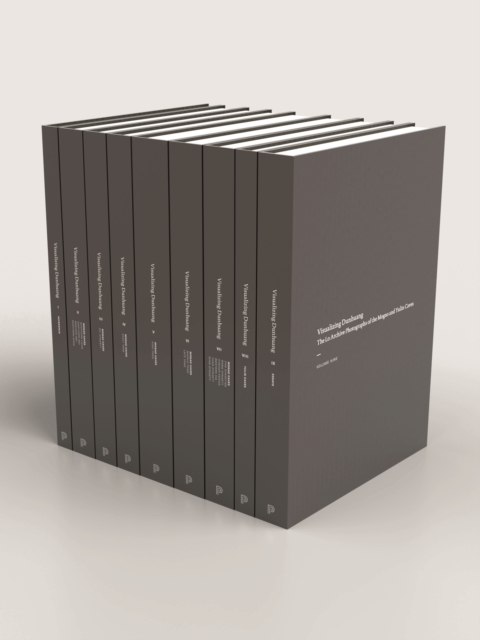
Visualizing Dunhuang : The Lo Archive Photographs of the Mogao and Yulin Caves Hardback
Edited by Dora C. Y. Ching
Part of the Publications of the Tang Center for East Asian Art, Princeton University series
Hardback
Description
Available in a limited print run of 1,000 sets—the stunning nine-volume presentation of the incredible Buddhist caves at Dunhuang in northwestern ChinaSituated at an important juncture within the network of silk routes from China through central Asia, the oasis city of Dunhuang was an ancient site of Buddhist religious activity.
Southeast of the city, the Mogao Caves, also known as the Caves of the Thousand Buddhas, are an astonishing group of hundreds of caves—carved in the cliffs between the fourth and fourteenth centuries—containing sculptures and paintings.
Further east sit the Yulin Caves, another critical and richly decorated site.
Featuring some of the finest examples of Buddhist imagery to be found anywhere in the world, these caves have enticed explorers, archaeologists, artists, scholars, and photographers since the early twentieth century. Visualizing Dunhuang: The Lo Archive Photographs of the Mogao and Yulin Caves presents for the first time in print the comprehensive photographic archive—created in the 1940s by James C.
M. Lo (1902–1987) and his wife, Lucy L. Lo (b. 1920)—of the remarkable Buddhist caves at Dunhuang. This extraordinary nine-volume set features more than 3,000 of the original black-and-white photographs that provide an indispensable historical record.
Invaluable for their documentary worth and artistic quality, and thorough in their coverage and clarity, the images represent a rare perspective on significant monuments, many now irretrievably changed.
The Lo Archive serves as a treasure trove of historical, cultural, and artistic information for researchers, art historians, and conservators. The introductory volume includes an essay about the formation and history of the Lo Archive, as well as maps, diagrams, photographs of the Mogao site, and concordances.
The central volumes contain photographs of the Mogao and Yulin Caves, collaged photographs, several hundred newly created diagrammatic plans, and English and Chinese captions.
The final volume is a collection of essays that addresses the complexity and richness of the Lo Archive, and how Dunhuang has been viewed from ancient times to the present.
Contributors include Neville Agnew, Dora Ching, Jun Hu, Annette Juliano, Richard Kent, Wei-Cheng Lin, Cary Liu, Maria Menshikova, Jerome Silbergeld, Roderick Whitfield, and Zhao Shengliang. Exquisitely produced, this monumental set’s abundant photographs have been lavishly printed as tritones, allowing for the closest possible match to James Lo’s original black-and-white photographs, and for the clearest, richest images possible.
With numerous silk-screened pages and an eight-page double-sided gatefold, Visualizing Dunhuang stands as a definitive reference for scholars, collectors, and libraries in art history and Asian studies. Published in association with the Tang Center for East Asian Art, Princeton University
Information
-
Available to Order - This title is available to order, with delivery expected within 2 weeks
- Format:Hardback
- Pages:3128 pages, 106 color + 3,392 tritone + 50 duotone + 388 b/w illus.
- Publisher:Princeton University Press
- Publication Date:01/06/2021
- Category:
- ISBN:9780691208152
Information
-
Available to Order - This title is available to order, with delivery expected within 2 weeks
- Format:Hardback
- Pages:3128 pages, 106 color + 3,392 tritone + 50 duotone + 388 b/w illus.
- Publisher:Princeton University Press
- Publication Date:01/06/2021
- Category:
- ISBN:9780691208152






